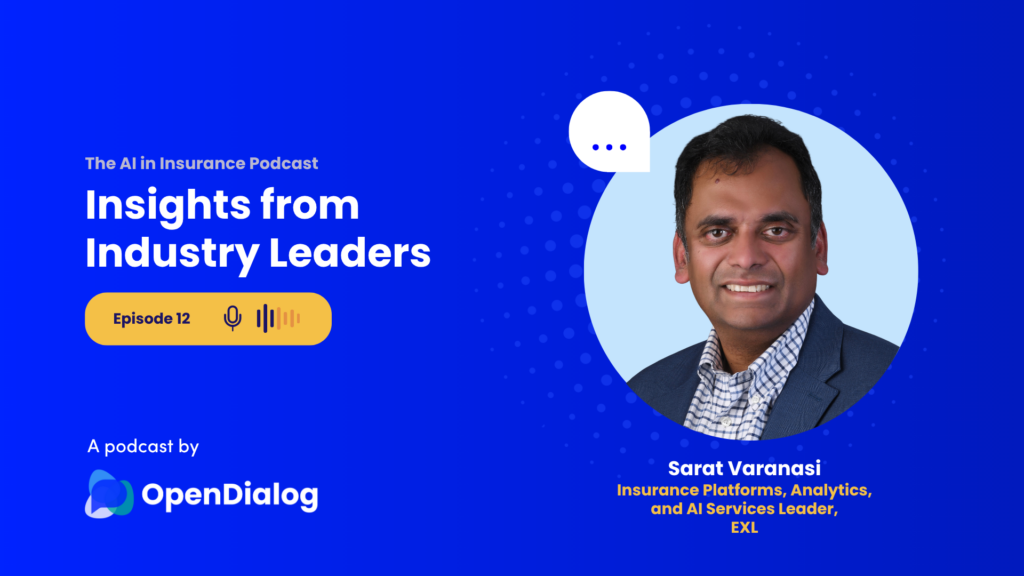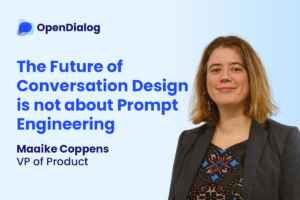When it comes to embedding AI into insurance platforms, few people have been closer to the frontline than Sarat Varanasi, who leads Insurance Platforms, Analytics, and AI at EXL.
Sarat is a trusted advisor to the C-suite, a published thought leader, and was recently recognized as one of the Top 25 Insurance Consultants by The Consulting Report. He also spent more than 17 years at Cognizant before joining EXL, and today, his team is pushing the boundaries of what AI can do in insurance. Notably, EXL recently developed its own insurance specific large language model (LLM) in partnership with Nvidia – a move that’s already delivering game changing accuracy gains for clients.
Why Build an Insurance Specific LLM?
Sarat explains that the journey started with a simple but frustrating use case: medical record summarization.
Publicly available LLMs could perform the task, but they often missed the nuance and domain- specific language in complex records. EXL had something those models didn’t – access to anonymized client data. By training its own LLM with that data, EXL was able to improve summarization accuracy by 60-80% compared to generic models.
“We saw our clients experimenting, but the models weren’t accurate enough. By leveraging our data, and with Nvidia as a partner, we were able to deliver domain-specific performance that really moves the needle.”
Where AI Is Making the Biggest Impact
For Sarat, AI in insurance isn’t one monolithic technology – it’s a spectrum of capabilities:
- Machine learning models (well-established in insurance for years, e.g., subrogation prediction).
- Natural language processing (NLP) to turn unstructured notes and documents into structured insights.
- Generative AI and large language models (LLMs) for summarization, guidance, and content generation.
- AI agents that support teams with real-time answers and workflow augmentation.
Across P&C and life insurance, he’s seeing AI deliver real value in areas such as:
- Claims: Faster cause-of-loss analysis, negotiation guidance, and arbitration letters.
- Underwriting: Cutting cycle times from weeks to hours by automating data extraction and analysis.
- Knowledge management: Turning unstructured content into insights for adjusters, underwriters, and even finance teams.
- Business intelligence: Analyzing analyst reports and Q&A transcripts to predict competitor moves with >70% accuracy.
Wherever there’s rich, unstructured content, Sarat says, AI is now unlocking new ways to drive value.
Client Maturity Is Rising Fast
Not long ago, Sarat recalls, clients would ask: “How do we even start with AI?” Now, the conversations are more sophisticated:
- Should AI be managed centrally or in federated business units?
- Do we need a Center of Excellence (CoE) to set guardrails?
- How do we operationalize models – moving from DevOps to AIOps with frequent, monitored rollouts?
While maturity varies by organization, Sarat sees speed to value as the common priority.
Efficiency, Growth, and Risk: The Core Drivers
In Sarat’s experience, the motivations for AI adoption fall into three broad categories:
- Efficiency: Automating repetitive work, reducing cycle times, and making processes faster.
- Growth: Enabling underwriters and claims teams to handle more volume without sacrificing quality.
- Risk: Using AI-driven insights to improve decision-making and avoid leakage.
Who Owns AI in Insurance?
Ownership varies, but Sarat sees Chief Data & Digital Officers and CIOs increasingly central to the conversation. In some carriers, AI responsibility has even shifted under operations leaders, reflecting the belief that underwriting and claims functions are where the greatest impact lies.
Security, data anonymization, and governance remain critical, meaning CIOs still play a pivotal role in shaping safe adoption.
Practical Lessons for Insurers
Sarat leaves the industry with a few clear takeaways:
- Don’t overengineer. Start with simple, high-value use cases.
- Leverage your data. Clean, domain-specific data is the foundation for effective AI.
- Use AI for data, as well as data for AI. Apply AI to structure the unstructured, then build on that foundation.
- Experiment and learn. Small prototypes create momentum – don’t wait for perfect
conditions. - Augment, don’t replace. AI should enhance human expertise, not eliminate it.
Looking Ahead
For Sarat, the future of AI in insurance isn’t about chasing buzzwords. It’s about practical application, measurable improvement, and client value.
“AI is both for data and powered by data. If you start simple, stay focused on business problems, and learn as you go, the opportunities are enormous.”
We would love to chat further. Contact us at [email protected]



